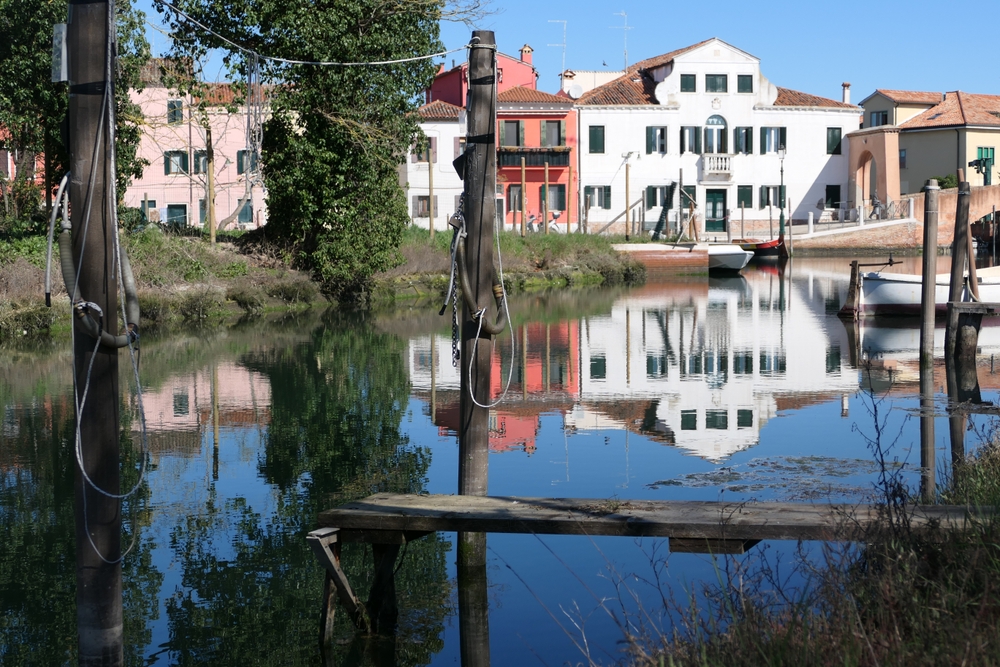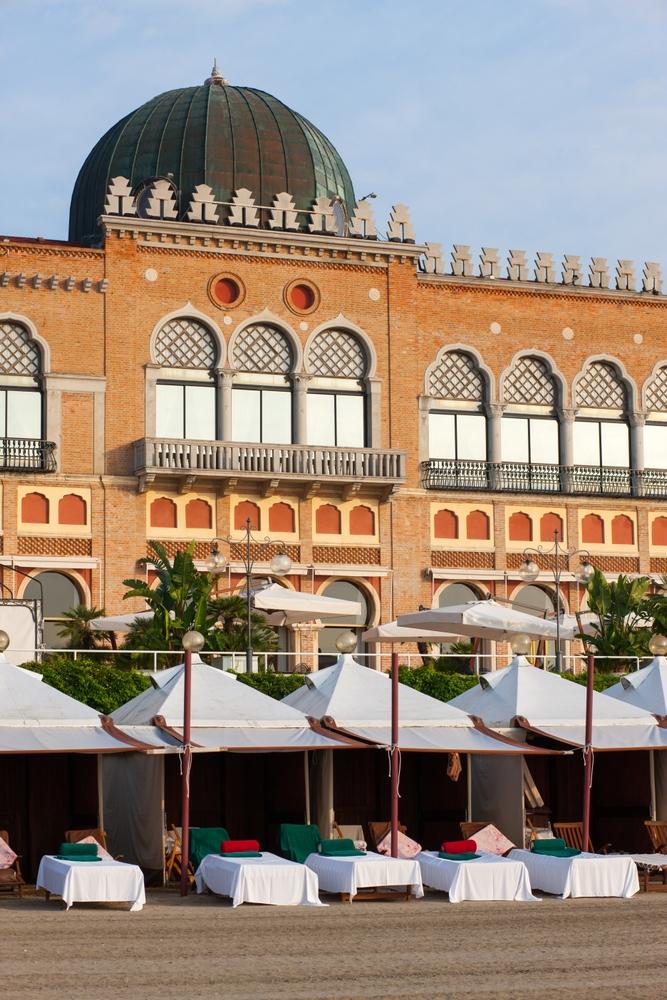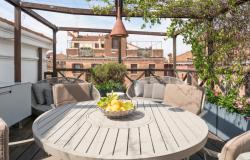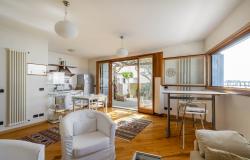Ed. Wednesday, August 28, 2024: This article was originally published in 2013 and has been lightly updated.
Only the lagoon divides it from Venice, yet the Lido di Venezia is as distant from the noise and confusion of the tourist crowds as it could possibly be. Except, that is, for around ten days every year between the end of August and the beginning of September, when celebrities — and with them scores of fans — flock to the Lido for the Venice Film Festival, held at the Palazzo del Cinema. Founded in 1932 by the president of the Biennale di Venezia, the count Giuseppe Volpi di Misurata, the festival has always attracted headline names from the film industry, from Greta Garbo and Clark Gable to George Clooney and Cate Blanchett.
The rest of the year, the slow pace of life at the Lido, a thin stretch of land extending in front of Venice for about 11km (or 7 miles), makes it a perfect destination for leisurely biking, with the Venice Lagoon on one side and the Adriatic Sea on the other. There’s nothing quite like taking in the light, colors, water reflections, and saltwater scents as you admire historic and artistic treasures. Below is a suggested itinerary for a slow day on the Lido; cyclists can follow it directly, and casual walkers can mine it for inspiration.
Begin at ground zero of the Venice Film Festival

The main mooring place for the Lido is Piazzale Santa Maria Elisabetta, where you can pick up a rental bike. Begin on the lively Lungomare Guglielmo Marconi, home to the Palazzo della Mostra del Cinema, the Venice Casino, and the luxury Grand Hotel des Bains and Grand Hotel Excelsior (the red carpet for the Venice Film Fest goes right from the Excelsior to the Palazzo del Cinema; fans hoping for a glimpse of stars arriving by water taxi gather on the hotel terrace).
Lungomare Marconi is also where you’ll find the beaches that made the Lido a cosmopolitan seaside resort between the 18th and 19th centuries. There are no umbrellas and chairs like those you’d find at many other Italian beaches; here, they use the famous capanne (little huts or shacks, or elegant white tents such as those of the Excelsior). In the past, this area was frequented by the likes of Lord Byron, who could be seen horse-riding or swimming across the lagoon, and Thomas Mann, who took inspiration for Death in Venice (1912) from his stays at the Hotel des Bains. You can get a sense of the area’s longtime splendor in the numerous Liberty (Art Nouveau) villas, many owned by wealthy Venetians as seaside homes. As you pedal or walk along, you’ll come upon the murazzi, which begin at the end of the Lungomare Marconi; they were an important 18th-century architectural endeavor by the Venice Republic, aimed at defending the island from sea storms.
Veer south toward a calm, colorful fishing village

Proceeding south, you’ll come upon Malamocco, the first (and for a long time, the only) settlement of the Lido. Dating back to Roman times, when it was called Metamaucum, it was the Episcopal seat in the seventh century and capital of the Duchy of Venice between the eighth and ninth centuries. Today it’s a calm and colorful fishermen’s village built around the 13th-century church of Santa Maria Assunta and the Gothic Palazzo del Podestà. After Malamocco, on the south tip of the island, you’ll find Alberoni, one of the oldest seaside resorts of the Lido. Just behind the shore is the Oasi delle Dune, a World Wildlife Fund-protected area with tall sand dunes and a wild natural habitat.
Unwind in Pellestrina

From here you can catch the ferry to Pellestrina, a timeless, tiny sandbar, where, in some points, you can walk from one side to the other in just a few steps. Some of the small fishermen’s villages, with their colorful houses, little squares, calli and seafood smells include Santa Maria del Mare, San Pietro in Volta and Pellestrina, the most populous of the three. It’s divided into four neighborhoods (sestieri) that take the name from the families that were sent here by the Magistrate of Chioggia in the 14th century: Busetto, Vianello, Zennaro and Scarpa. After Pellestrina, it’s another 20km (12 miles) to head back to Piazzale Santa Maria Elisabetta on the Lido. Take your time, stop off at one of the local restaurants for a grigliata di pesce (grilled seafood platter), and absorb the tranquility before braving Venice’s crowds.














